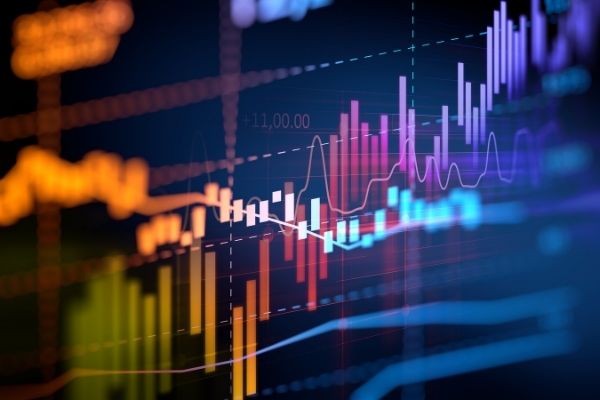Choosing the right grow light system can have a significant impact on indoor vertical farms, particularly those with no exposure to natural light. Different grow light colors facilitate different areas of plant growth, and light uniformity determines crop quality. Farmers should choose a combination of colored LEDs and grow light panels that offer high light uniformity to more easily meet cultivation goals.
When selecting the right LED grow lights for vertical farming, much of the focus goes to light intensity, longevity, and quality. Historically, these three factors have played an important role in producing healthy and nutritious crops.
It has also been proven time and again that LED performance is far superior to that of traditional lighting solutions such as compact fluorescent lights and incandescent lights.
Yet LED grow light color and uniformity have an equally significant impact on the production of crops in vertical farms.
The Importance of Light Color and Uniformity
In most cases, vertical farming takes place indoors in converted warehouses, shipping containers, and offices, relying entirely on artificial lighting.
Thus, there is great importance in getting light color combinations right and maximizing light uniformity. These actions can lead to healthier and more beautiful crops with higher retail and nutritious values.
The Effects of Light Color on Plants
Vertical farms are often seen to be bathed in swathes of purple light in addition to white light to stimulate growth. This is because plants respond better to the red and blue spectra in light.
Red lights strengthen flower formation in plants and their ability to carry fruit while increasing photosynthesis effectiveness. Leaves under red light are thinner and larger, and plant length increases.
Blue lights are crucial in photosynthesis and growth regulation. When leafy greens are exposed to blue light, their stems and leaves become greener, which can be desirable for farmers to cultivate nutritious and aesthetically beautiful crops to appeal to customers.
The Effects of Light Uniformity on Plants
Light uniformity in vertical farming refers to how well light is distributed within the growing area. It is measured at the canopy level at a specific distance from the light source, and it is the difference in light intensity between the highest and lowest measured values.
Light uniformity is an essential factor in the growing process. Keeping light variation to a minimum ensures that plants can receive an even amount of light and grow at similar rates.
If an area of a vertical farm receives too much illumination, those crops may dry out quicker than the rest and make watering plants much more difficult. If the reverse happens and an area receives too little illumination, those crops will not thrive.
Our LED Grow Light System
Our LED grow light system consists of smart shelves and racks for efficient and sustainable vertical farming, focusing on the easy optimization of light color and uniformity.
Features of our Grow Light System
The system’s main component is a shelf integrated with the highest quality LEDs, characterized by its high light output. The number and color of our LEDs are customizable to meet each farm’s cultivation goals.
Plants respond well to the red and blue spectra in light. Therefore, farmers can curate vertical farming lighting by using a combination of red and blue LEDs to stimulate crop growth. They can also include high power white LEDs to simulate daylight as farming is done indoors.
A popular lighting combination our vertical farmers choose is 8 deep red LEDs, 4 royal blue LEDs, and 2 high power white LEDs. The red and blue LEDs target plant growth and fruit-bearing, while high power white LEDs mimic sunlight and provide light across the entire spectrum.
The supporting component of our system, the rack, keeps the shelf secure and builds the vertical layers for farming. Depending on the farm’s size and layout, the rack can also be custom-made.
Applications of our Grow Light System
The grow light system can be used in practically any indoor farming location with access to electrical power. These include indoor greenhouses, offices, converted warehouses, and shipping containers.
Aside from aiding in the planting process, the grow light system can also be used in transportation, distribution, and retail.
Light Uniformity Test
As an expert in LED technology, our grow light system has superior light uniformity compared to other lighting solutions on the market.
Testing LED iBond’s Panels at a Vertical Farm
In late 2021, LED iBond did a real-life experiment at a vertical farm with a Moving Gutter System (MGS) to test the light uniformity of our LEDs versus those on the market. We compared LEDs in our grow light panels we developed to traditional lighting from Linear Horticulture Luminaires.
Both grow light panels had the same light spectrum distribution with 6% blue, 15% green, and 79% red light. They shined on a grid of crops that measured 105 x 1050mm at a distance of 36cm, and light uniformity was measured with UPRtek PG200N, a spectral meter used to measure the quantity and quality of light in indoor farming.
Results of High Light Uniformity and Performance from LED iBond
The results showed that our grow light panels have outstanding light uniformity across the illuminated plant area, with only a +/- 10% variation.
With an average light intensity of 185 μmol/s/m2, LED iBond’s lights only varied between 175-215 μmol/s/m2. On the other hand, traditional lighting from Linear Horticulture Luminaires varied by +/- 50% at between 100-300 μmol/s/m2.
According to the owner of the vertical farm on which we conducted these tests, the results we obtained were significant to obtaining a uniform plant harvest and optimizing plant yield, giving 6% more growth per W/m2.
LED iBond emphasizes light uniformity as an extremely valuable factor for plant growth and farm operations. A high light uniformity regulates crop growth, flowering, and fruit-formation schedules.
Combined with the ability to adjust beam angles in the smart shelves in our grow light system, plants grown with light from LED iBond can be healthier and more flavorful.
Other Benefits of our LED Grow Lights and Panels
Aside from high light uniformity and availability in a range of colors, LEDs from LED iBond also carry an array of other benefits such as long lifespans, low long-term operational cost, and compatibility with third-party devices.
Exceedingly long lifespans
At LED iBond, we are a pioneer in LED technology. The lifespan of our LEDs is 100,000 operating hours, which translates to over a decade of continuous use without replacement.
The longevity of our LEDs is thanks to our patented heat management concept. While conventional lighting companies utilize a PCB, heatsink, housing, and driver with their LEDs, we invented and patented a ‘sandwich’ system that places our LEDs between two Aluminium Composite Panels (ACPs).
The aluminium act as efficient heat conductors that allow any heat generated by our LEDs to be dissipated effectively, protecting each LED’s light output and health.
Low Operational Cost in the Long Term
Many LED users view this lighting technology as an investment. While LEDs are slightly more expensive upon initial purchase, they have long lifespans and high energy efficiency, requiring less electricity than traditional lighting solutions to produce the same brightness.
The low replacement rates and efficient electricity consumption combine to create significant energy savings, which lower the farm’s overall operational cost. Money not spent on LED grow lights can then be funneled back into the farms for other purposes.
Compatible with Third-Party Devices
When it comes down to it, what ultimately sets our LED lighting solutions apart from those on the market is their intelligence.
Our grow light system is equipped with Internet of Things (IoT) integration and compatible with third-party devices such as sensors, control systems, USB ports, cameras, and more.
Vertical farmers can monitor their farms remotely, and those who wish to manage multiple vertical farms simultaneously can also do so. Additionally, they can toggle lighting controls from their device or set triggers for lights to adjust automatically.
Our grow light system can also be integrated into a more extensive control system with other vertical farming technology, such as ventilators, humidifiers, and moving gutter systems.
How our Sustainable Lighting Solutions Help Farmers and the Planet
At LED iBond, we combine our passion for light and data to create intelligent and sustainable lighting solutions for high-quality crop harvests. We contribute to the United Nations Global Goals, some of which are to reduce CO2 emissions and produce crops independent of farmland.
LED lights for vertical farming are often the largest single capital investment for farmers, using approximately 100 Watts per shelf per m2. Therefore, their operational efficiency should be maximized to save on costs and help the environment.
With high light uniformity and quality, farmers can improve their harvests’ quantity and nutritious value in urban areas. Consequently, they can increase their profit margin while feeding their local communities.
Get in Touch
Our customizable LED lights for vertical farming offer multicolor light output with high light uniformity, and they deliver optimum light recipes for multi-layer crops. Designed, developed, and manufactured in Denmark, the panels have been proven in practice to improve the quality and quantity of crop yields.
For more information, please contact Sales on the button below. We look forward to talking to you.













